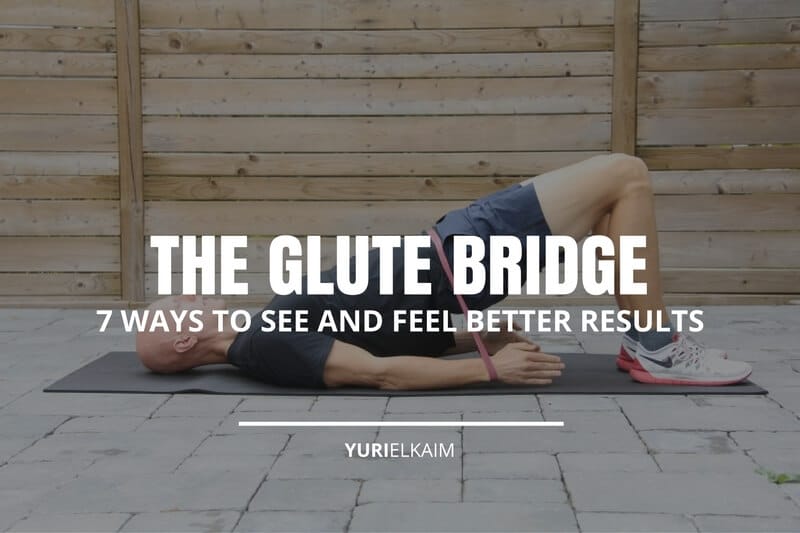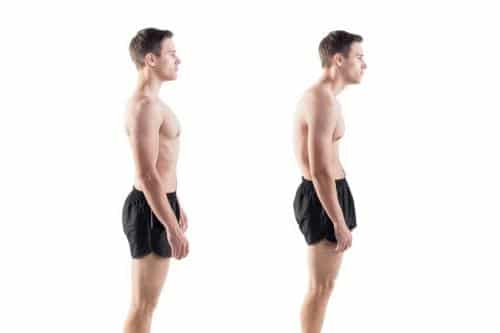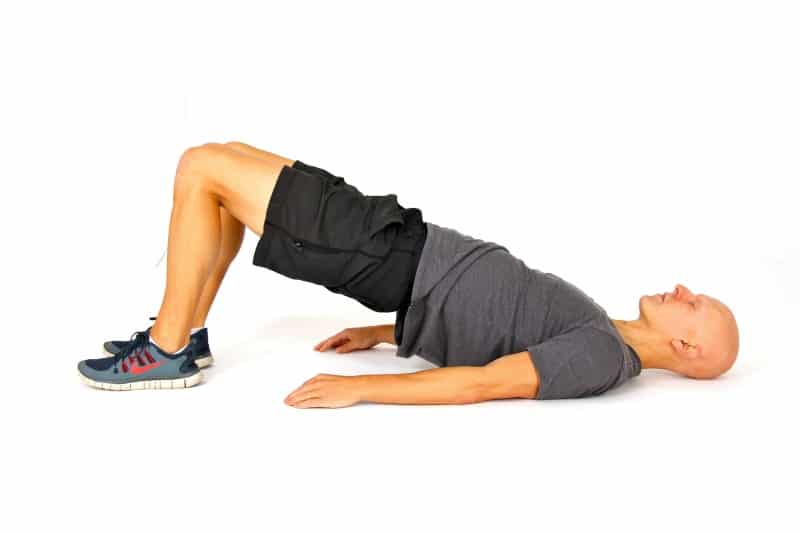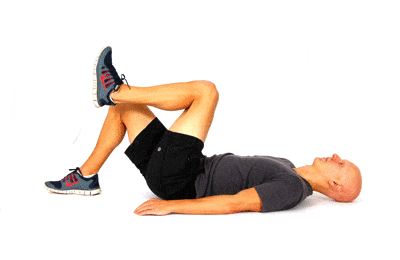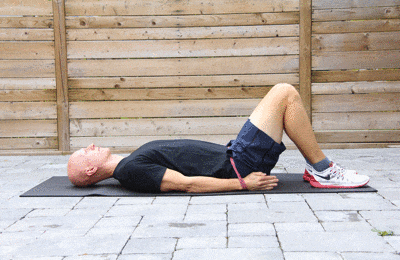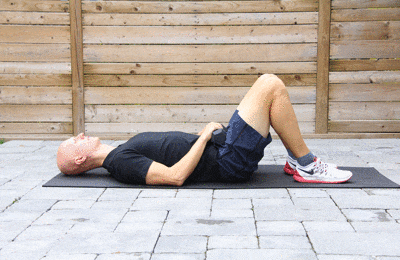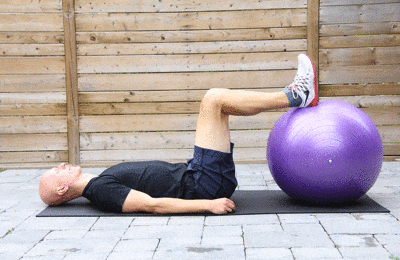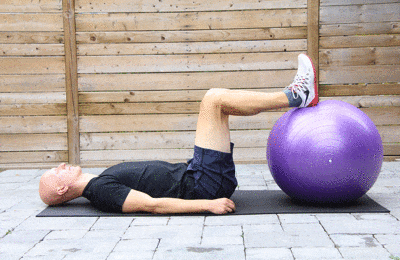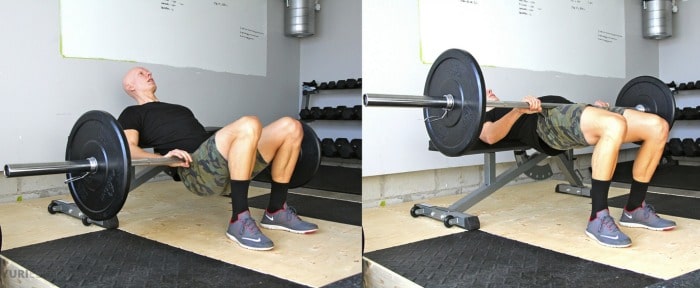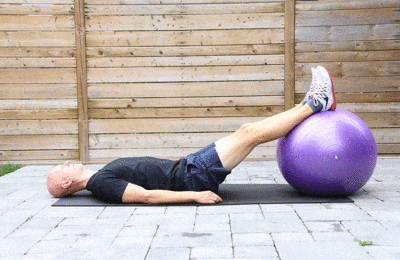In this article
What exercise comes to mind when you think about building a better backside?
If you thought squats, you’re not alone. And while the squat offers lots of benefits – including tightening up those glutes – there’s another exercise that belongs in any glute-sculpting repertoire.
It’s the glute bridge.
The bridge is a winner when it comes to targeting our entire backside and core. In fact, it’s one of the best exercises to strengthen the gluteus medius muscles – one of the three glute muscles responsible for giving us that ever-coveted lift (1).
It also does a lot more than just tighten your glutes. It strengthens your core, helps build power, and can make you stronger in other exercises, too. I’m guessing it’ll become a go-to on your list of regular exercises.
Glute Bridge Exercise Benefits
1. Improves Posture
When you spend a lot of your day sitting, your glute muscles can loosen – or get weaker – while the hip flexors in the front of your thighs can shorten, making them tight.
Over time, this can cause you to slouch, as your tight hip flexors pull you forward and your weak glutes aren’t strong enough to pull you back upright.
But when you target the glutes and the lower back muscles during the glute bridge, the muscles that are responsible for holding your body upright get stronger.
2. Helps Lessen Low Back Pain
Sitting so much at work has made low back pain a common problem.
As I mentioned earlier, poor posture leads weak glute and core muscles. When this happens, our body compensates by using the low back and quadriceps for most of our daily activities, which can lead to strain on the lower back – and even more muscle imbalances.
Again, the glute bridge comes to the rescue.
By activating our entire posterior chain (the back of our body), the glute bridge exercise helps build a strong muscular support system for our spine and lower back, protecting it against strain, pain, and injuries (2).
3. Improves Performance
Strong glutes and a tight core keep our spine in alignment, add power to our movements, and propel us forward – all important factors when it comes to athletic performance.
Not only that, but studies have shown that correcting muscle deficiencies in the hips and glute area can help lessen leg and knee pain in runners.
4. Strengthens Your Core
Even though the exercise targets the butt, the glute bridge activates your core stabilizer muscles.
These muscles – the transversus abdominis and multifidus – wrap around your entire midsection. Their function is to support the spine and, when strengthened, pull in the stomach like a corset.
Mastering the Glute Bridge Exercise
Another great thing about the glute bridge is that we’re not limited to just the standard version. There are several ways to do it, and tools like bands, weights, and benches can help you get even more out of your bridge.
But first, before we get too fancy, let’s start with the conventional glute bridge.
Basic Glute Bridge Exercise
- Lie on your back with your knees bent and your feet flat on the floor.
- Tighten your glutes and lift your hips off the floor.
- At the highest position, there should be a straight line from your knees all the way to your shoulders. Hold the contraction for five seconds before returning to the starting position.
Check out the seven variations below that will take your glute bridge to the next level.
1. Single-Leg Bridge
The single-leg bridge is a step up from the traditional bridge.
It can be pretty difficult if you haven’t developed the glute strength required to hold most of your weight on one leg, so if you feel it’s too challenging, try working on your regular bridges before attempting the single-leg version.
This version will not only challenge the glutes, but also the stabilizer muscles in the hips and core, which work to support nearly every movement we perform.
Performing the Single-Leg Bridge
- Begin lying face up on the floor, legs bent at a 90-degree angle to the floor.
- Push up into a standard bridge, then raise one leg off the floor. You can either keep it parallel to the floor or lift it straight into the air.
- Slowly lower until you’re almost toughing the floor, then thrust your hips back up, keeping your leg extended, weight in your heels. Pause for a count at the top.
- Repeat on both legs for 10 to 15 reps.
2. Banded Glute Bridge
The banded glute bridge adds extra resistance by using a yoga band around your hips for a heightened glute burn.
Performing the Banded Glute Bridge
- Begin by wrapping one end of a yoga band around the bottom of your heels, planting them firmly on the ground to hold the band in place.
- Bring the other end of the band up and around your knees so that it’s resting around your mid-thigh area.
- Lie flat on the floor and press up into a bridge through your heels, feeling the extra resistance the band offers at the top of the movement.
- Lower and return to your starting position.
- Repeat for 10 to 15 reps.
3. Weighted Bridge
The weighted bridge is amazing for targeting the glutes and building strength, which will take all of your bridge variations to the next level.
For this variation you will need a barbell to place across your hips.
Performing the Weighted Bridge
- Begin lying on the floor with a barbell (use just the bar if you’re a beginner) across your hips.
- Grasping the bar with both hands, hold it in place as your trust your hips upward through your heels.
- Squeeze your glutes at the top of the movement, then lower.
- Repeat for 8 to 10 reps.
4. Elevated Bridge
This bridge variation is excellent for upping the intensity of the regular bridge by adding some elevation. For this one, you’ll need a bench, a stability ball, or a box to prop your heels on.
Performing the Elevated Bridge
- Begin lying on the floor, with your heels propped up on a bench or box.
- Keeping your knees bent at a 90-degree angle, drive your glutes skyward through your heels. Be sure to keep your glutes and core tight throughout the movement.
- Lower until just off the ground, then repeat for 10 to 15 reps.
5. Single-Leg Elevated Bridge
The single-leg elevated bridge isolates each glute, while also challenging your balance.
Performing the Single-Leg Elevated Bridge
- Begin lying on the floor, with your heels propped up on a bench or box.
- Lift one leg in the air, keeping the other on the box and bent at a 90-degree angle.
- Drive your glutes skyward through your heel. Be sure to keep your glutes and core tight and your leg extended throughout the movement.
- Lower until just off the ground, then repeat for 10 to 15 reps on each leg.
6. Barbell Hip Thrusters
Barbell hip thrusters typically involve more weight than most of these bridge variations, so you should make sure you can get through the weighted bridge before moving onto hip thrusters.
For this exercise, make sure you use a bench or box that won’t move as you brace against it. Also, use a weight that’s challenging for you, yet doesn’t compromise your form to the point where you’re using your lower back to compete the thrust.
Another point to keep in mind: avoid hyperextending the low back during this exercise.
Performing Barbell Hip Thrusters
- Begin by putting padding around your barbell to prevent it from digging into your hips when you thrust.
- Place your upper back on your bench with your barbell across your hips.
- Keep your feet planted firmly on the ground, close to your glutes.
- Drive your hips skyward, engaging your core and abs.
- Hold for a count then lower to your starting position.
- Repeat for 8 to 10 reps.
7. Straight-Leg Bridge
The straight-leg bridge brings the hamstrings into play, engaging your entire backside.
Many use a suspension trainer to do this exercise, but you can get a similar effect using a low bench or even a stability ball.
Performing the Straight-Leg Bridge
- Begin lying flat on the ground with your legs extended out in front of you. Your feet will either be suspended in your suspension trainer straps or elevated, resting on your heels on a low bench.
- Place your arms on the ground by your sides to brace yourself.
- Squeeze your glutes and push your hips skyward through your heels, keeping your legs extended.
- Be sure to engage your core to help protect your lower back.
- Lower to your starting position and repeat for 8 to 10 reps.
Keep Your Muscles Guessing
The glute bridge has so many variations you’re almost guaranteed to never get bored or plateau in your glute training. Plus, trying new exercises can add a fun new element to your workouts.
Getting creative with your bands and weights adds a whole new dimension to glute isolation and core strengthening – a win-win when it comes to aesthetics and performance.
Fat Blaster Workout
Looking for a new fat-burning workout that will sculpt your muscles as you get lean?
You’ll love my Fat Blaster workout, which will give you a slimmer, fitter, and sexier body. This downloadable workout includes an instructional video, workout tracker, and follow-along audio. A $29 value – it’s yours, FREE!
Just click the banner below to get access to it now.

